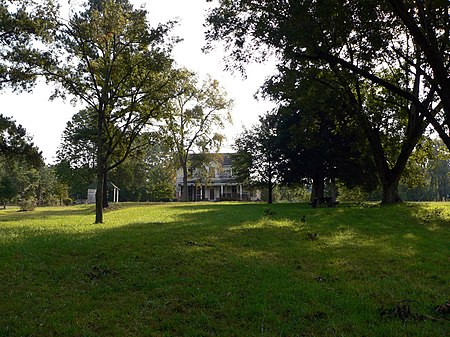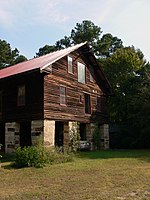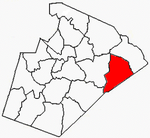Oaky Grove
Federal architecture in North CarolinaHouses completed in 1818Houses in Wake County, North CarolinaHouses on the National Register of Historic Places in North CarolinaNational Register of Historic Places in Wake County, North Carolina ... and 2 more
Plantation houses in North CarolinaWake County, North Carolina Registered Historic Place stubs

Oaky Grove is a historic house located in Shotwell, Wake County, North Carolina, a suburb of Raleigh. Built in 1818 by Thomas Price, Oaky Grove has been home to generations of the Price, Blake, and Doub families. Before the Civil War, the Price plantation consisted of 4,500 acres (1,800 ha) of farm land. Today, the 28-acre (11 ha) property is owned by the Doubs family and contains the two-story Federal style home, a smokehouse, barn, and the family cemetery.In September 1993, Oaky Grove was listed on the National Register of Historic Places.
Excerpt from the Wikipedia article Oaky Grove (License: CC BY-SA 3.0, Authors, Images).Oaky Grove
Turnipseed Road,
Geographical coordinates (GPS) Address Nearby Places Show on map
Geographical coordinates (GPS)
| Latitude | Longitude |
|---|---|
| N 35.740222222222 ° | E -78.440175 ° |
Address
Turnipseed Road 5841
27591
North Carolina, United States
Open on Google Maps




